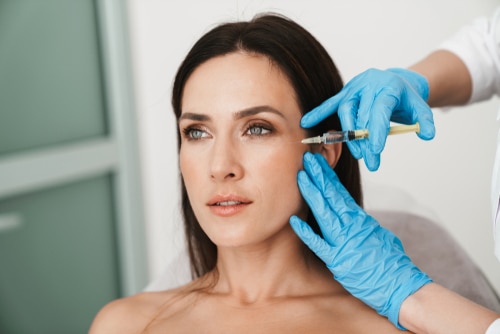Botox, also known as botulinum toxin, is a neurotoxic protein used to treat various medical conditions and cosmetic concerns. It is derived from the bacterium Clostridium botulinum, which produces a powerful toxin that can cause severe muscle paralysis and potentially fatal respiratory failure if ingested. However, when used in small doses, Botox can effectively treat various medical and aesthetic issues.
How does Botox work?
Botox works by temporarily paralyzing muscle activity in the area where it is injected. This is achieved by blocking the release of acetylcholine, a neurotransmitter that signals the muscles to contract. When injected into a muscle, Botox binds to the nerve endings that release acetylcholine, preventing them from sending the signal to contract. This results in a temporary relaxation of the muscle and a reduction in the appearance of fine lines and wrinkles.
What does Botox treat?
Botox is most commonly used to treat dynamic wrinkles caused by repetitive facial movements such as frowning, squinting, or smiling. These wrinkles form over time as the skin loses elasticity and the underlying muscles contract repeatedly. Botox injections can smooth out these wrinkles by relaxing the underlying muscles and preventing them from contracting.
Botox can also be used to treat a variety of medical conditions, including muscle spasms, chronic migraines, excessive sweating, and overactive bladder. In these cases, Botox works by blocking the signals that cause the muscles to contract or reducing the activity of certain nerves that are responsible for transmitting pain signals.
How long does Botox last?
The effects of Botox typically last for three to six months, after which the muscle activity gradually returns to normal. This means that repeat injections are necessary to maintain the desired results. However, with repeated use, the effects of Botox may last longer as the muscles become trained to stay relaxed.
The use of Botox is generally considered safe when administered by a qualified medical professional. However, like any medical procedure, there are potential risks and side effects associated with Botox injections. These can include bruising, swelling, redness, and pain at the injection site, as well as more serious side effects such as difficulty swallowing, breathing, or speaking.
It is important to note that Botox should only be administered by a qualified medical professional who has received specialized training in the use of Botox injections. They should also have experience in treating the specific condition or concern being addressed. Patients should always disclose their full medical history and medications to their doctor before receiving Botox injections.
In conclusion, Botox is a highly effective treatment for a variety of medical and aesthetic concerns. It works by temporarily relaxing muscle activity in the area where it is injected, thereby reducing the appearance of fine lines and wrinkles and treating a variety of medical conditions. While Botox is generally considered safe when administered by a qualified medical professional, it is important to be aware of the potential risks and side effects associated with the procedure. By working closely with a qualified medical professional and following their recommendations, patients can achieve safe and effective results with Botox.

